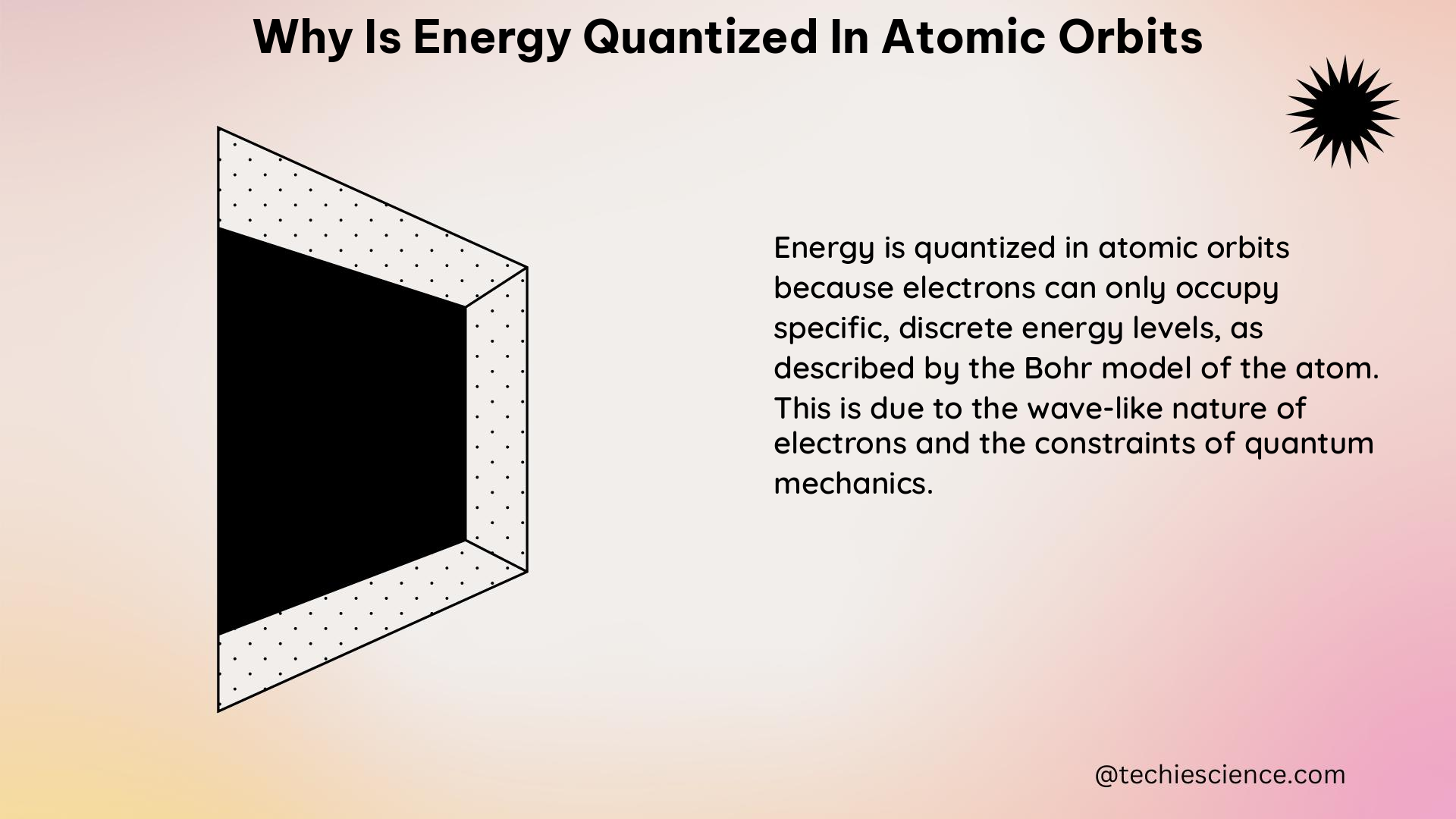The energy of electrons in atomic orbits is quantized, meaning that it can only take on specific, discrete values rather than a continuous range of values. This phenomenon is a fundamental aspect of quantum mechanics and has profound implications for our understanding of the behavior of atoms and molecules. In this comprehensive blog post, we will delve into the reasons behind the quantization of energy in atomic orbits, exploring the underlying principles, mathematical formulations, and practical applications.
The Wave-Particle Duality and the Heisenberg Uncertainty Principle
The quantization of energy in atomic orbits is a direct consequence of the wave-particle duality of matter and the Heisenberg Uncertainty Principle. According to the wave-particle duality, electrons and other subatomic particles exhibit both wave-like and particle-like properties. This means that an electron in an atom can be described as a wave function, which represents the probability of finding the electron at a particular location.
The Heisenberg Uncertainty Principle states that the position and momentum of a particle cannot be measured with absolute precision simultaneously. This fundamental limitation has a direct impact on the energy levels of electrons in atoms. If the electron’s position and momentum were known with complete certainty, it would be possible to calculate its energy with arbitrary precision, which would result in a continuous range of energy values. However, the Heisenberg Uncertainty Principle prevents this, leading to the quantization of energy levels.
The Rydberg Formula and the Bohr Model

The quantization of energy in atomic orbits can be mathematically described using the Rydberg formula, which was developed by the Swedish physicist Johannes Rydberg in the late 19th century. The Rydberg formula expresses the energy levels of an electron in a hydrogen atom as:
E_n = (-13.6 eV) / n^2
where E_n is the energy of the nth energy level, and n is the principal quantum number, which can take on integer values (1, 2, 3, …).
This formula demonstrates that the energy levels of an electron in a hydrogen atom are indeed quantized, as they depend on the integer value of n. The energy levels are not continuous, but rather discrete, with specific values determined by the Rydberg formula.
The Bohr model of the atom, proposed by the Danish physicist Niels Bohr in 1913, provides a further explanation for the quantization of energy in atomic orbits. According to the Bohr model, an electron in an atom can only occupy certain allowed orbits, each with a specific energy level. The transition of an electron between these allowed energy levels results in the emission or absorption of a photon with an energy equal to the difference between the two energy levels.
Emission and Absorption Spectra
The quantization of energy in atomic orbits can be observed experimentally through the study of emission and absorption spectra. When an atom absorbs energy, an electron is excited to a higher energy level. When the electron subsequently falls back to a lower energy level, it emits a photon with a specific energy, corresponding to the difference between the two energy levels.
The energies of the emitted or absorbed photons are quantized, as they are determined by the discrete energy levels of the atom. This results in a line spectrum, where only certain wavelengths of light are observed, rather than a continuous spectrum. The pattern of these spectral lines is unique to each element, providing a powerful tool for the identification and study of atoms and molecules.
Practical Applications of Energy Quantization
The quantization of energy in atomic orbits has numerous practical applications in various fields of science and technology. Some of the key applications include:
-
Atomic and Molecular Spectroscopy: The study of emission and absorption spectra is fundamental to the field of atomic and molecular spectroscopy, which is used in a wide range of applications, such as chemical analysis, astrophysics, and materials science.
-
Laser Technology: The quantization of energy levels in atoms and molecules is the underlying principle behind the operation of lasers, which rely on the controlled emission of photons with specific energies.
-
Quantum Mechanics and Quantum Computing: The understanding of energy quantization in atomic orbits is a cornerstone of quantum mechanics, which has led to the development of quantum computing and other quantum technologies.
-
Atomic Clocks: Atomic clocks, which are the most accurate timekeepers in the world, rely on the precise measurement of the energy transitions between specific atomic energy levels.
-
Nuclear Physics and Radioactivity: The quantization of energy levels in atomic nuclei is crucial for understanding nuclear processes, such as radioactive decay and nuclear fission.
In conclusion, the quantization of energy in atomic orbits is a fundamental concept in quantum mechanics that has far-reaching implications across various scientific disciplines. By understanding the underlying principles, mathematical formulations, and practical applications of this phenomenon, we can gain deeper insights into the behavior of atoms and molecules, and unlock new frontiers in science and technology.
References:
1. Quantization of the Energy of Electrons – BCcampus Pressbooks
2. Quantum Energy Levels in Atoms – Chemistry LibreTexts
3. Why is energy quantized? – Reddit
4. Quantization of Energy | Overview & Examples – Study.com

The lambdageeks.com Core SME Team is a group of experienced subject matter experts from diverse scientific and technical fields including Physics, Chemistry, Technology,Electronics & Electrical Engineering, Automotive, Mechanical Engineering. Our team collaborates to create high-quality, well-researched articles on a wide range of science and technology topics for the lambdageeks.com website.
All Our Senior SME are having more than 7 Years of experience in the respective fields . They are either Working Industry Professionals or assocaited With different Universities. Refer Our Authors Page to get to know About our Core SMEs.